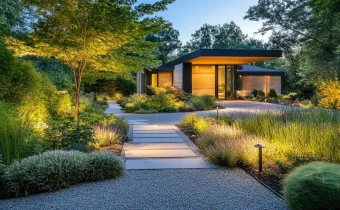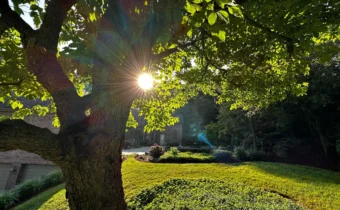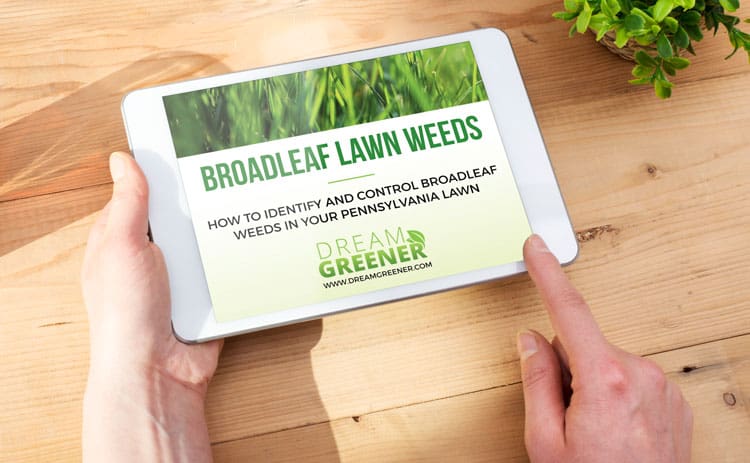A Fresh Start: Why Mulch Matters in Spring
Spring is the perfect time to refresh your landscape and prepare it for the seasons ahead—and mulch is one of the most effective ways to do that. In Pittsburgh, where winter can be harsh and summers hot and humid, mulch provides protection, insulation, and aesthetic appeal that lasts all season long.
At Dream Greener Lawn & Landscape, we know that properly applied mulch isn’t just for looks—it’s essential for healthy, vibrant garden beds and trees. This guide covers everything you need to know to make the most of mulching this spring.
 What Mulch Does for Your Landscape
What Mulch Does for Your Landscape
Mulch provides multiple benefits for your garden beds and trees:
- Moisture Retention: Mulch helps your soil stay moist longer between watering.
- Weed Suppression: A thick layer of mulch blocks sunlight from reaching weed seeds.
- Temperature Control: Mulch insulates soil, protecting plant roots from sudden changes in weather.
- Erosion Prevention: It helps keep soil in place during spring rains.
- Soil Health: As organic mulch breaks down, it contributes nutrients to the soil.
- Aesthetic Appeal: Fresh mulch creates a clean, polished look across your entire landscape.
Types of Mulch: Why Dream Greener Chooses Pine Bark
While there are many types of mulch available, Dream Greener uses shredded pine bark mulch in three color options:
- Cherry Brown (our most popular)
- Black
- Natural
We prefer bark mulch for its long-lasting color, excellent water retention, and the way it breaks down slowly, contributing organic matter to your soil without compacting it. Unlike some store-bought mulches, our mulch is seed-free, reducing the likelihood of weed growth and ensuring a cleaner, healthier result.
When requested, we also use compost to topdress entire beds or nourish annual flower displays. This enhances the soil’s texture and fertility, helping your plants thrive.
Applying Mulch the Right Way
Improper mulching can do more harm than good. Here are a few best practices:
How Much Mulch Should You Apply?
- Garden Beds: 2-3 inches
- Around Trees: 2-3 inches (away from trunk)
- Perennials: 1-2 inches
- Annual Beds: 1 inch + optional compost layer
- Sloped Areas: 2-3 inches to prevent erosion
Avoid “volcano mulching,” where mulch is piled up around tree trunks. This traps moisture and can rot the bark. Always keep mulch 2-3 inches away from the trunk or stems of plants.
 What to Do Before You Mulch
What to Do Before You Mulch
- Weed Thoroughly: Pull all visible weeds and consider applying a pre-emergent if needed.
- Edge Your Beds: Clean, crisp edges contain mulch and create a finished look.
- Test the Soil: Check moisture and nutrient levels and consider compost if fertility is low.
- Lay Compost (Optional): Especially for annuals, applying compost before mulch gives plants a great nutrient boost.
Do You Need Landscape Fabric or Plastic?
In most cases, no. We recommend against placing plastic or landscape fabric under mulch. It can compact the soil, trap moisture, and prevent nutrients from reaching plant roots. Mulch works better and breaks down naturally when applied directly to the soil.
Dream Greener’s Mulching Advantage
We don’t just dump mulch and go. We offer a clean, consistent, and efficient mulching service, thanks to our commercial-grade Bark Blower. This specialized machine evenly distributes mulch by blowing it into beds through a hose system. The results are:
- Efficient application
- Smoother, more uniform appearance
- Less disruption to your plants and soil
- No piles of mulch dumped on your driveway or creating wheelbarrow tracks across your lawn
The Bark Blower can also be used for:
- Topdressing lawns and gardens with compost
- New lawn installations
- Applying erosion control blankets
- Spreading mulch on playgrounds
When to Mulch in Pittsburgh
While we install mulch from March through early December, spring mulching is ideal between mid-March and late May. This timing ensures the ground has thawed and soil has warmed but weeds have not fully emerged. In Pittsburgh’s climate, this approach helps stabilize soil temperatures, retain spring rains, and minimize early weed growth.
How Long Does Mulch Last?
In Pittsburgh, mulch generally lasts 6 to 12 months, depending on:
- Weather (heavy rain or extreme heat breaks it down faster)
- Sun exposure (fades mulch more quickly)
- Type of mulch (pine bark lasts longer than wood chips or dyed mulch)
You’ll typically want to top off mulch in spring to maintain color and depth. If mulch is decomposing into a thin layer or becoming compacted, a fresh application is ideal.
 Bark Mulch vs. Wood Chips
Bark Mulch vs. Wood Chips
-
Durability
-
Bark Mulch: Long-lasting
-
Wood Chips: Breaks down quickly
-
-
Weed Control
-
Bark Mulch: Excellent
-
Wood Chips: Moderate
-
-
Nutrient Value
-
Bark Mulch: Adds nutrients as it breaks down
-
Wood Chips: Lower nutrient return
-
-
Appearance
-
Bark Mulch: Smooth and uniform look
-
Wood Chips: Chunky and uneven
-
-
Best Use
-
Bark Mulch: Ideal for garden beds, around trees, and shrubs
-
Wood Chips: Great for pathways and rustic or natural areas
-
Bark mulch is the clear winner for most landscape beds, especially when appearance, weed control, and long-term value are priorities.
Is Mulch Bad for Plants? Common Myths Debunked
Myth: Mulch encourages pests and disease
Truth: Properly applied mulch helps prevent plant stress, which reduces susceptibility to pests. It can also help regulate moisture and keep fungal spores from splashing onto foliage.
Myth: You don’t need mulch around trees
Truth: Mulch benefits trees greatly by protecting roots and reducing soil compaction. Just avoid piling it against the trunk.
Myth: Old mulch has to be removed every year
Truth: Not necessarily. If the existing mulch is still in good condition and hasn’t compacted too much, you can simply top it off with a fresh layer.
Can You Use Too Much Mulch?
Yes. Excessive mulch can:
- Smother plant roots
- Promote shallow root growth
- Cause fungal issues due to trapped moisture
Stick to the recommended depths, and refresh your mulch annually, rather than heaping on a thick new layer each season.
Can You Use Bark Mulch in Vegetable Gardens?
Yes—but with care. Bark mulch is safe to use around vegetables, especially paths or permanent beds. However, compost or straw may be more ideal directly around edible plants since they decompose more quickly and contribute directly to soil fertility.
Why Hire Dream Greener for Your Spring Mulching?
Instead of hauling dozens of bags from a store, let Dream Greener handle it:
- We supply high-quality, seed-free pine bark mulch in popular colors.
- Our Bark Blower ensures efficient, professional application.
- Our experienced team provides proper bed prep and installation.
- We offer compost options and can incorporate mulch into your full spring landscape maintenance plan.
Schedule your mulch installation today and let our team give your landscape a clean, finished look while setting the foundation for a healthy growing season.
Final Thoughts
Mulching is more than just a spring cleanup—it’s one of the most effective steps you can take to improve your landscape’s appearance and health for the entire season. Done right, it adds beauty, suppresses weeds, improves soil, and helps your plants thrive in Pittsburgh’s unique climate.
Dream Greener Lawn & Landscape is proud to help homeowners throughout Pittsburgh achieve lush, low-maintenance landscapes with expert mulching and full-service care.
Ready to transform your landscape this spring? Schedule your mulch installation today.
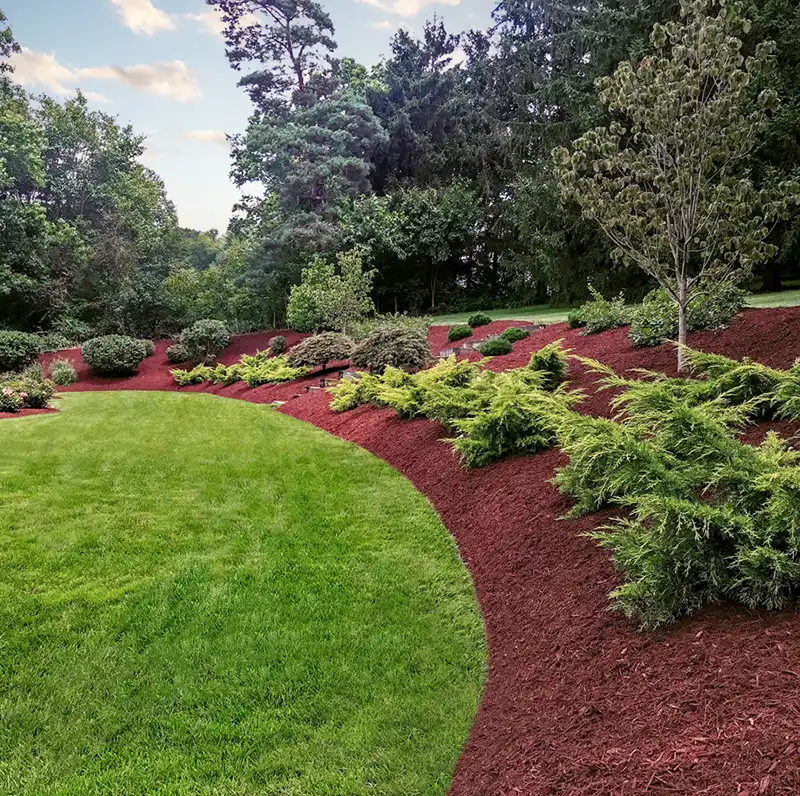 What Mulch Does for Your Landscape
What Mulch Does for Your Landscape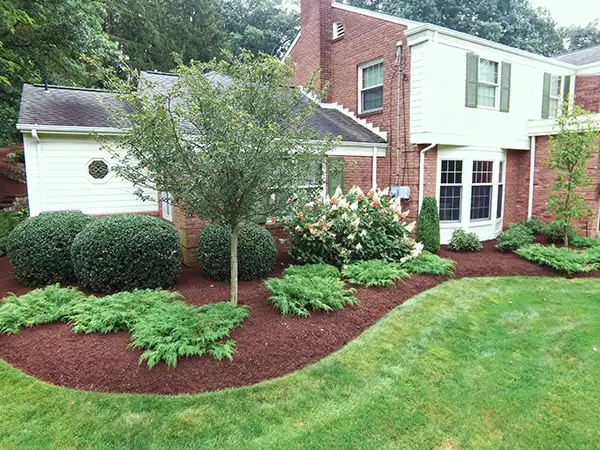 What to Do Before You Mulch
What to Do Before You Mulch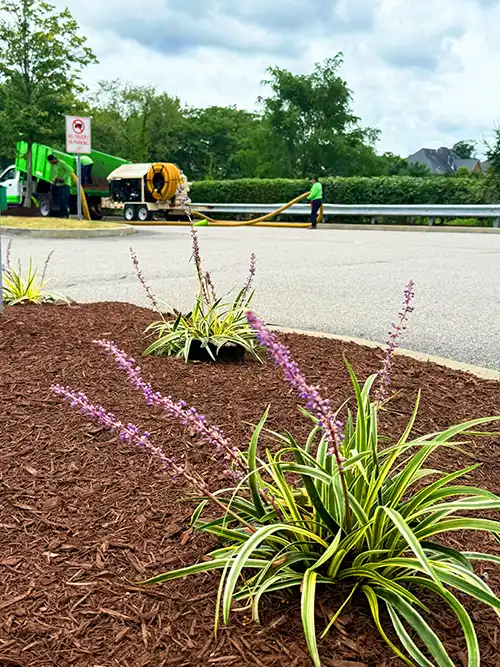 Bark Mulch vs. Wood Chips
Bark Mulch vs. Wood Chips